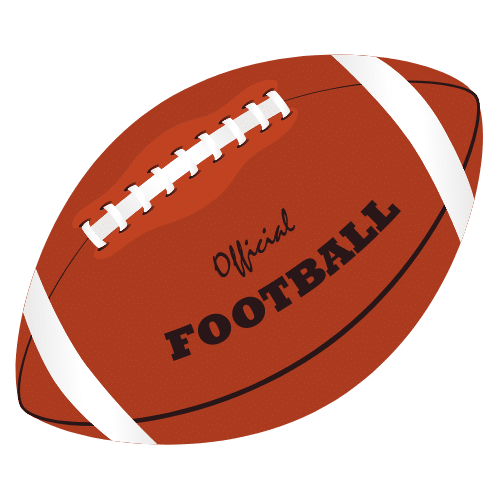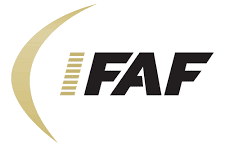Rule 2 - Definitions
SECTION 11. Fumble, Muff, Batting and Touching the Ball; Blocking a Kick
Article 1 - Fumble
Article 2 - Muff
Article 3 - Batting
Batting the ball is intentionally striking it or intentionally changing its direction with the head, hand(s) or arm(s). When in question, the ball is accidentally touched rather than batted. Batting the ball does not change its status.
Article 4 - Touching
a. Touching a ball not in player possession denotes any contact with the ball.
It may be intentional or unintentional, and it always precedes possession and control.
b. Intentional touching is deliberate or intended touching.
c. Forced touching results when a player’s contact with the ball is due to (i) an opponent blocking that player into it, or (ii) the ball being batted or illegally kicked into that player by an opponent. If the touching is forced, by rule the player in question has not touched the ball. (Rules 6-1-4 and 6-3-4).
d. When in question, a ball has not been touched on a kick or forward pass.
Article 5 - Blocking a Scrimmage Kick
SECTION 12. Lines
Article 1 - Sidelines
Article 2 - Goal Lines and Pylons
Article 3 - End Lines
Article 4 - Boundary Lines
Article 5 - Restraining Lines
A restraining line is part of a vertical plane that limits a team’s alignment for free kicks. The plane extends beyond the sidelines. (A.R. 2-12-5:I ).
Article 6 - Yard Lines
Article 7 - Hash Marks
Article 8 - Nine-Yard Marks
SECTION 13. Handing the Ball
Article 1 - Handing the Ball
a. Handing the ball is transferring player possession from one teammate to another without throwing, fumbling or kicking it.
b. Except when permitted by rule, handing the ball forward to a teammate is illegal.
c. Loss of player possession by unsuccessful execution of attempted handing is a fumble by the last player in possession (Exception: The snap (Rule 2-23-1-c)).
d. A backward handoff occurs when the ball carrier releases the ball before it is beyond the yard line where the ball carrier is positioned.
SECTION 14. Huddle
Article 1 - Huddle
SECTION 15. Hurdling
Article 1 - Hurdling
a. Hurdling is an attempt by a player to jump with one or both feet or knees foremost over an opponent while that opponent is still on their feet. (Rule 9-1-13).
b. "On their feet" means that no part of the opponent’s body other than one or both feet is in contact with the ground.
SECTION 16. Kicks; Kicking the Ball
Article 1 - Kicking the Ball; Legal and Illegal Kicks
a. Kicking the ball is intentionally striking the ball with the knee, lower leg or foot.
b. A legal kick is a punt, drop kick or place kick made according to the rules by a player of Team A before a change of team possession. Kicking the ball in any other manner is illegal. (A.R. 6-1-2:I)
c. Any free kick or scrimmage kick continues to be a kick until it is caught or recovered by a player or becomes dead.
d. When in question, a ball is accidentally touched rather than kicked.
Article 2 - Punt
Article 3 - Drop Kick
Article 4 - Place Kick
a. A field goal place kick is a kick by a player of the team in possession while the ball is controlled on the ground by a teammate. (Rule 2-16-9) b. A tee is a device that elevates the ball for kicking purposes. It may not elevate the ball’s lowest point more than one inch above the ground (A.R. 2-16-4:I). If utilised, a tee must be in contact with the ball for the kick to be legal.
c. A free kick place kick is a kick by a player of the team in possession while the ball is positioned on a tee or the ground. It may be controlled by a teammate. The ball may be positioned on the ground and contacting the tee.
d. No device or material may be used to mark the spot of a scrimmage place kick or to elevate the ball. This is a live-ball foul at the snap. (Rule 6-3-10-d)
Article 5 - Free Kick
a. A free kick is a kick by a player of the team in possession made under restrictions specified in Rules 4-1-4, 6-1-1 and 6-1-2.
b. A free kick after a safety may be a punt, drop kick or place kick.
Article 6 - Kickoff
Article 7 - Scrimmage Kick
a. A scrimmage kick is a punt, drop kick or field goal place kick. It is a legal kick if it is made by Team A in or behind the neutral zone during a scrimmage down before team possession changes.
b. A scrimmage kick has crossed the neutral zone when it touches the ground, a player, an official or anything beyond the neutral zone (Exception: Rule 6-3-1-b). (A.R. 6-3-1:I- IV)
c. A scrimmage kick made when the kicker’s entire body is beyond the neutral zone is an illegal kick and a live-ball foul that causes the ball to become dead (Rule 6-3-10-c).
Article 8 - Return Kick
Article 9 - Field Goal Attempt
Article 10 - Scrimmage Kick Formation
a. A scrimmage kick formation is a formation with no player in position to receive a hand-to-hand snap from between the snapper’s legs, and with either (1) at least one player seven or more yards behind the neutral zone; or (2) a potential holder and potential kicker five or more yards behind the neutral zone in position for a place kick. For either (1) or (2) to qualify as a scrimmage kick formation, it must be obvious that a kick will be attempted. (A.R. 9-1-14:I-III)
b. If Team A is in a scrimmage kick formation at the snap, any action by Team A during the down is deemed to be from a scrimmage kick formation.
SECTION 17. The Neutral Zone
Article 1 - The Neutral Zone
a. The neutral zone is the space between the two scrimmage lines extended to the sidelines. (Rule 2-21-2) Its width is equal to the length of the ball.
b. The neutral zone is established when the ball is ready for play and is resting on the ground with its long axis at right angles to the scrimmage line and parallel to the sidelines.
c. The neutral zone exists until there is a change of team possession, until a scrimmage kick crosses the neutral zone, or until the ball is declared dead.
SECTION 18. Encroachment and Offside
Article 1 - Encroachment
After the ball is ready for play, encroachment occurs when an offensive player is in or beyond the neutral zone after the snapper touches or simulates (hand(s) at or below his knees) touching the ball before the snap. (Exception: When the ball is put in play, the snapper is not encroaching when he is in the neutral zone.)
Article 2 - Offside on a scrimmage play
After the ball is ready for play, offside occurs (Rule 7-1-5) when a defensive player:
a. Is in or beyond the neutral zone when the ball is legally snapped; or
b. Contacts an opponent beyond the neutral zone before the ball is snapped; or
c. Contacts the ball before it is snapped; or
d. Threatens an offensive lineman, causing an immediate reaction, before the ball is snapped (Rule 7-1-2-b-3-Exception , (A.R. 7-1-3:V Note)); or
e. Crosses the neutral zone and charges toward a Team A back (A.R. 7-1-5:III) .
Article 3 - Offside on a free kick play
Offside occurs (Rule 6-1-2) when:
a. A defensive player is not behind their restraining line when the ball is legally free-kicked.
b. One or more players of the kicking team are not behind their restraining line when the ball is legally free-kicked (Exception: The kicker and holder are not offside when they are beyond their restraining line) (Rule 6-1-2).
SECTION 19. Passes
Article 1 - Passing
Passing the ball is throwing it. A pass continues to be a pass until it is caught or intercepted by a player or the ball becomes dead.
Article 2 - Forward and Backward Pass
a. A pass is forward if the ball first strikes the ground, a player, an official or anything else beyond the spot where the ball is released. All other passes are backward passes. When in question, a pass thrown in or behind the neutral zone is a forward rather than a backward pass
b. When a Team A player is holding the ball to pass it forward toward the neutral zone, any intentional forward movement of his hand with the ball firmly in his control starts the forward pass unless the player clearly starts to bring the ball back with firm control to his/her body. If a Team B player contacts the forward passer or ball after forward movement begins and the ball leaves the forward passer’s hand, a forward pass is ruled regardless of where the ball strikes the ground or a player. (A.R. 2-19-2:I)
c. When in question, the ball is passed and not fumbled during an attempted forward pass. (Exception: Games using Video Judge).
d. A snap becomes a backward pass when the snapper releases the ball, other than via a hand-to-hand exchange (A.R. 2-23-1:I).
Article 3 - Crosses Neutral Zone
a. A legal forward pass has crossed the neutral zone when it first strikes the ground, a player, an official or anything beyond the neutral zone inbounds. It has not crossed the neutral zone when it first strikes the ground, a player, an official or anything in or behind the neutral zone inbounds.
b. A player has crossed the neutral zone if his entire body has been beyond the neutral zone.
c. A legal forward pass is beyond or behind the neutral zone where it crosses the sideline.
Article 4 - Offside on a free kick play
SECTION 20. Penalty
A penalty is a result imposed by rule against a team that has committed a foul and may include one or more of the following: loss of yardage, loss of down, automatic first down, disqualification or subtraction from the game clock (Rule 10-1-1-b).



